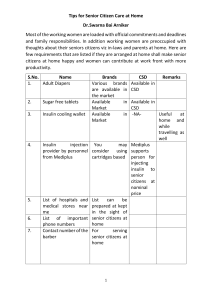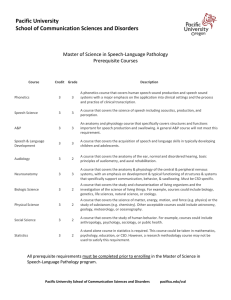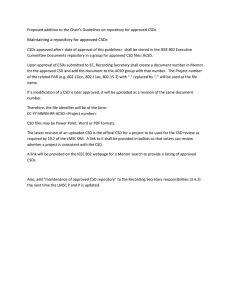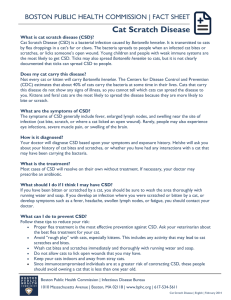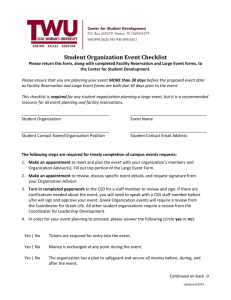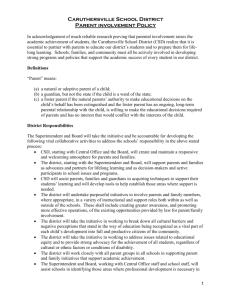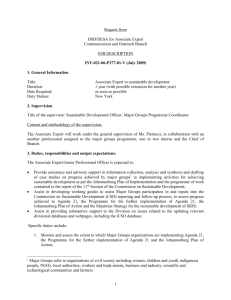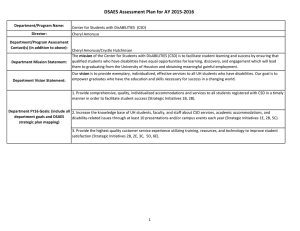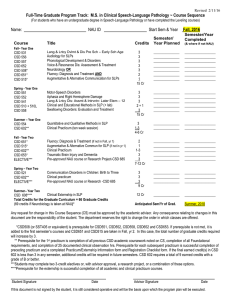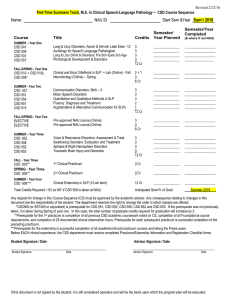Occupational Health - Zoonotic Disease Fact Sheet #16 CAT SCRATCH DISEASE
advertisement
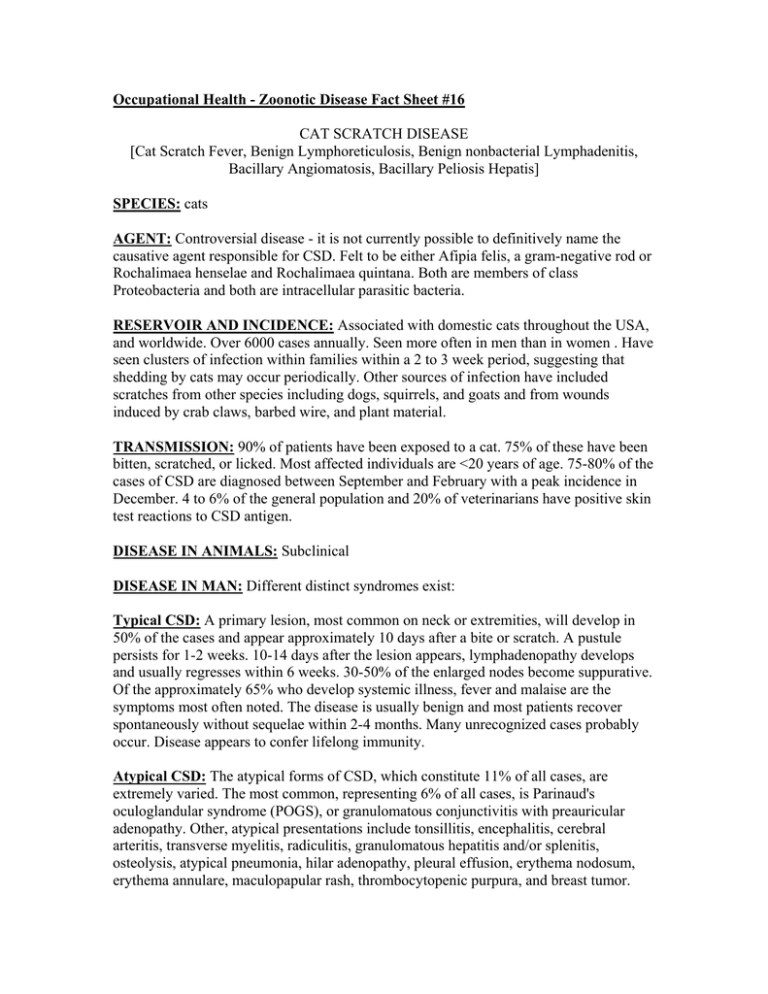
Occupational Health - Zoonotic Disease Fact Sheet #16 CAT SCRATCH DISEASE [Cat Scratch Fever, Benign Lymphoreticulosis, Benign nonbacterial Lymphadenitis, Bacillary Angiomatosis, Bacillary Peliosis Hepatis] SPECIES: cats AGENT: Controversial disease - it is not currently possible to definitively name the causative agent responsible for CSD. Felt to be either Afipia felis, a gram-negative rod or Rochalimaea henselae and Rochalimaea quintana. Both are members of class Proteobacteria and both are intracellular parasitic bacteria. RESERVOIR AND INCIDENCE: Associated with domestic cats throughout the USA, and worldwide. Over 6000 cases annually. Seen more often in men than in women . Have seen clusters of infection within families within a 2 to 3 week period, suggesting that shedding by cats may occur periodically. Other sources of infection have included scratches from other species including dogs, squirrels, and goats and from wounds induced by crab claws, barbed wire, and plant material. TRANSMISSION: 90% of patients have been exposed to a cat. 75% of these have been bitten, scratched, or licked. Most affected individuals are <20 years of age. 75-80% of the cases of CSD are diagnosed between September and February with a peak incidence in December. 4 to 6% of the general population and 20% of veterinarians have positive skin test reactions to CSD antigen. DISEASE IN ANIMALS: Subclinical DISEASE IN MAN: Different distinct syndromes exist: Typical CSD: A primary lesion, most common on neck or extremities, will develop in 50% of the cases and appear approximately 10 days after a bite or scratch. A pustule persists for 1-2 weeks. 10-14 days after the lesion appears, lymphadenopathy develops and usually regresses within 6 weeks. 30-50% of the enlarged nodes become suppurative. Of the approximately 65% who develop systemic illness, fever and malaise are the symptoms most often noted. The disease is usually benign and most patients recover spontaneously without sequelae within 2-4 months. Many unrecognized cases probably occur. Disease appears to confer lifelong immunity. Atypical CSD: The atypical forms of CSD, which constitute 11% of all cases, are extremely varied. The most common, representing 6% of all cases, is Parinaud's oculoglandular syndrome (POGS), or granulomatous conjunctivitis with preauricular adenopathy. Other, atypical presentations include tonsillitis, encephalitis, cerebral arteritis, transverse myelitis, radiculitis, granulomatous hepatitis and/or splenitis, osteolysis, atypical pneumonia, hilar adenopathy, pleural effusion, erythema nodosum, erythema annulare, maculopapular rash, thrombocytopenic purpura, and breast tumor. DIAGNOSIS: The sedimentation rate is elevated, the white blood cell count normal, and the pus from the nodes is sterile. ID skin testing with antigen prepared from the pus is positive. Excisional biopsy, usually performed to exclude lymphoma, confirms the diagnosis. TREATMENT: For CSD: Rifampin, ciprofloxacin, gentamycin, and trimethoprim-sulfa. Aspiration of suppurating nodes is recommended for relief of pain. Symptoms resolve without treatment in 2-4 months. BA and BPH respond to erythromycin, rifampin, or doxycycline. Therapy must be continue for 4-6 weeks to avoid relapse. PREVENTION/CONTROL: Education. Proper handling techniques. Wash hands after handling cat. Wash cuts and scratches promptly and don't allow cat to lick open wound. Flea control measures. BIOSAFETY LEVEL: BL-1
